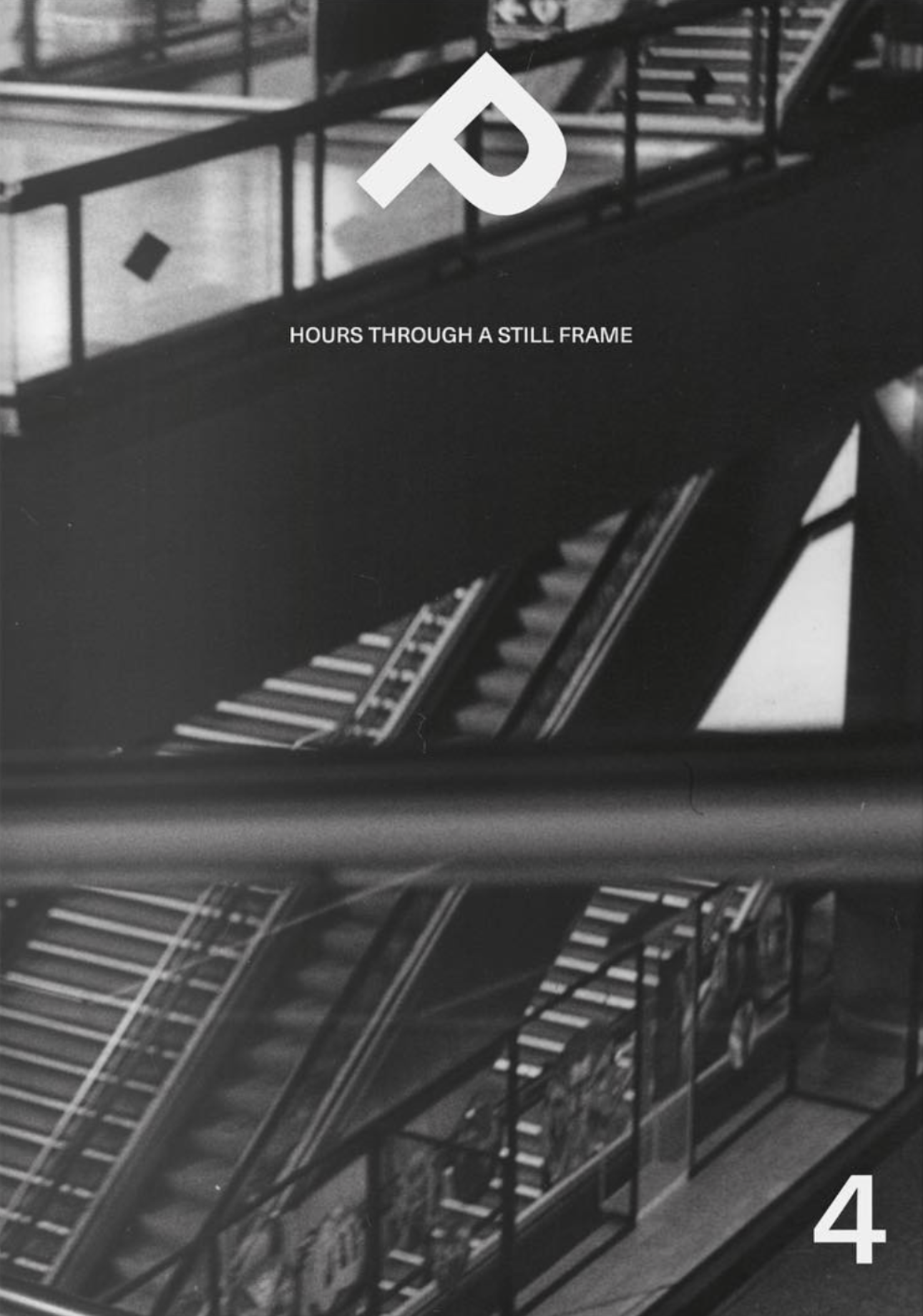ISSUE 04 – Hours Through A Still Frame (PDF)
One lives in time while standing in space, carving out a place for memory amidst the passage of forgotten things. We make a world out of our luggage and set out to unpack it. Things carried and abandoned make eternity a momentary plaything.
Perhaps it is not in the nature of permanent things to last forever. On the surface this is just a play of words – a washed-up parable – but to this protest one might as well respond with another unavoidable cliché: the only constant is change.
Is the search for immortality the urge to live forever, or rather the plea to be remembered? Implicit in the last word of this question is the acceptance of a beginning and an end, for one does not recall things that are present, their search starts once they’re gone. The notion of permanence is then not a matter of duration, but rather a discussion around resurrection, not static but recurring, not fixed but fluid. To live forever is to be taken up by others - a change in the body and an abandonment of the corpse. An eternal return; a going backwards that steals away from time. Permanence draws us in, calls us back. It is not a stillness but a pulling a very old attraction inviting us to dance, and as one can easily observe: recurring things have a rhythm. Maybe all art is then just matter of dancing, a search for reconciliation in which bodies adjust themselves to recurrences in time. The aura of things; the start of a conversation.
One lives in time while standing in space, carving out a place for memory amidst the passage of forgotten things. We make a world out of our luggage and set out to unpack it. Things carried and abandoned make eternity a momentary plaything.
Perhaps it is not in the nature of permanent things to last forever. On the surface this is just a play of words – a washed-up parable – but to this protest one might as well respond with another unavoidable cliché: the only constant is change.
Is the search for immortality the urge to live forever, or rather the plea to be remembered? Implicit in the last word of this question is the acceptance of a beginning and an end, for one does not recall things that are present, their search starts once they’re gone. The notion of permanence is then not a matter of duration, but rather a discussion around resurrection, not static but recurring, not fixed but fluid. To live forever is to be taken up by others - a change in the body and an abandonment of the corpse. An eternal return; a going backwards that steals away from time. Permanence draws us in, calls us back. It is not a stillness but a pulling a very old attraction inviting us to dance, and as one can easily observe: recurring things have a rhythm. Maybe all art is then just matter of dancing, a search for reconciliation in which bodies adjust themselves to recurrences in time. The aura of things; the start of a conversation.
One lives in time while standing in space, carving out a place for memory amidst the passage of forgotten things. We make a world out of our luggage and set out to unpack it. Things carried and abandoned make eternity a momentary plaything.
Perhaps it is not in the nature of permanent things to last forever. On the surface this is just a play of words – a washed-up parable – but to this protest one might as well respond with another unavoidable cliché: the only constant is change.
Is the search for immortality the urge to live forever, or rather the plea to be remembered? Implicit in the last word of this question is the acceptance of a beginning and an end, for one does not recall things that are present, their search starts once they’re gone. The notion of permanence is then not a matter of duration, but rather a discussion around resurrection, not static but recurring, not fixed but fluid. To live forever is to be taken up by others - a change in the body and an abandonment of the corpse. An eternal return; a going backwards that steals away from time. Permanence draws us in, calls us back. It is not a stillness but a pulling a very old attraction inviting us to dance, and as one can easily observe: recurring things have a rhythm. Maybe all art is then just matter of dancing, a search for reconciliation in which bodies adjust themselves to recurrences in time. The aura of things; the start of a conversation.

